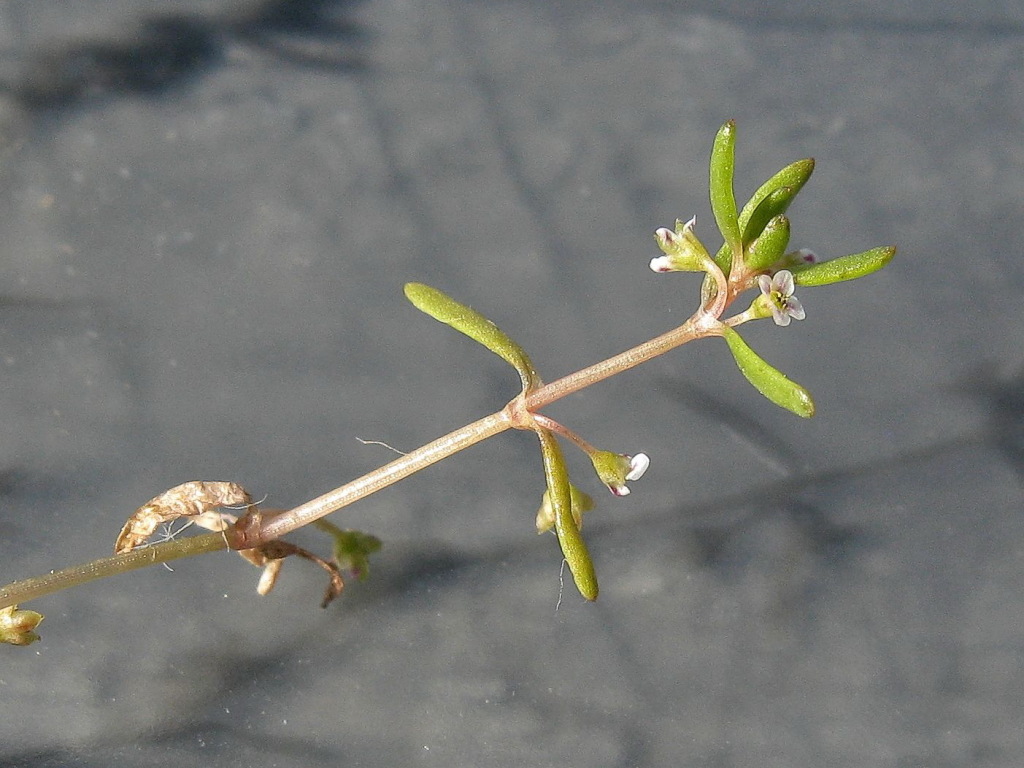Crassula natans var. minus
(Eckl. & Zeyh.) Rowley Floating PigmyweedSemi-aquatic annuals with branches decumbent, filiform to 10 cm and much-branched on moist substrates, or when floating, to 35 cm long and little-branched. Leaves linear to oblanceolate, 1.4–8(–12) mm long, 0.2–2.2 mm wide, obtuse or rounded, rarely acute, dorsiventrally flattened to almost terete; sheath 0.3–0.5 mm long. Flowers 1 or 2(–3) in axil of 1 leaf at normally successive nodes; 4-merous; calyx-lobes broadly triangular, 0.2–0.4 mm long, obtuse or rounded; corolla white often tinged pink, lobes oblanceolate, 0.5–1.1 mm long, obtuse, erect; nectary scales oblong-cuneate, 0.4–0.5 mm long, 0.15–0.25 mm wide, truncate; carpels obovoid, becoming cylindric, with 1 ovule. Follicles smooth, strongly recurved, opening along the whole suture; fruiting pedicel elongating, 1.4–6.4 mm long; seeds 0.6–0.7 mm long, smooth or with faint longitudinal ridges. Flowers mainly Aug.–Nov.
LoM, Wim, GleP, VVP, VRiv, MuF, GipP, OtP, WaP, Gold, CVU, GGr, DunT, NIS, EGU, HSF, OtR. Also naturalised WA, SA, Tas. Native to south-western southern Africa. Grows in moist soil often in clay-pans and in and around shallow standing water of dams and rock pools.
On moist soil plants are often deep red, tufted, less than 6 cm high and with up to 3 flowers per node. When inundated the floating branches become up to 35 cm long, are swollen at the base where they bear linear leaves while the floating leaves are oblanceolate and much broader, and produce rarely more than 1 flower per node. The floating stems are little-branched, and may be unbranched in plants growing in rock pools without much organic matter.
Toelken, H.R.; Jeanes, J.A.; Stajsic, V. (1996). Crassulaceae. In: Walsh, N.G.; Entwisle, T.J., Flora of Victoria Vol. 3, Dicotyledons Winteraceae to Myrtaceae, pp. 542–555. Inkata Press, Melbourne.
 Spinning
Spinning
